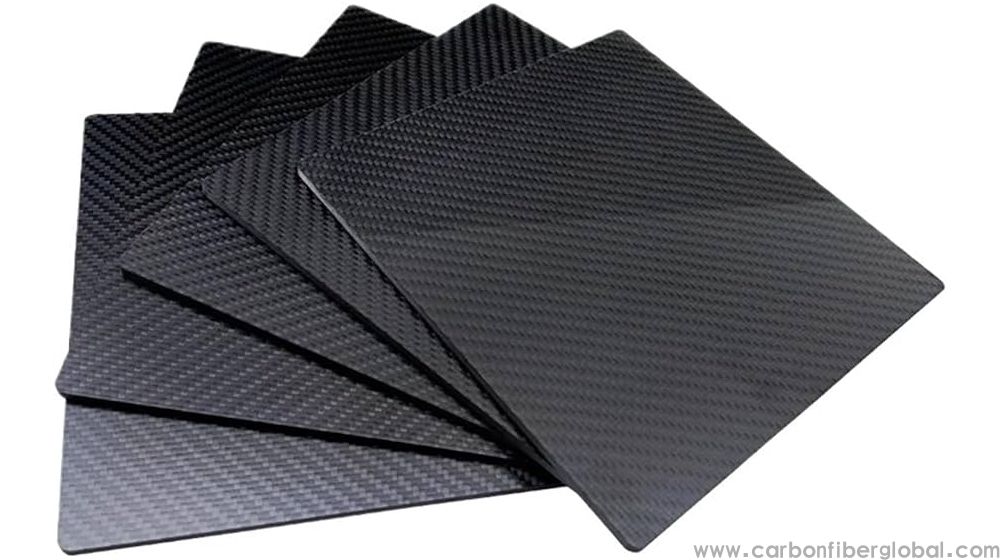As industries across the globe strive for greater efficiency, performance, and sustainability, lightweight Carbon Fiber Sheets have emerged as a game-changing material. From aerospace to automotive, construction to sports equipment, Carbon Fiber's unique combination of strength, lightweight properties, and durability makes it an ideal choice for applications where performance and weight reduction are critical. In this article, we explore why lightweight Carbon fiber sheets are at the forefront of high-performance material solutions and how they are shaping the future of various industries.

1. Unmatched Strength-to-Weight Ratio
One of the primary reasons for the increasing adoption of carbon fiber sheets is their exceptional strength-to-weight ratio. Carbon fiber is incredibly strong—often stronger than steel—yet it is much lighter. This unique combination makes carbon fiber sheets perfect for industries where reducing weight without sacrificing strength is crucial.
For example, in the automotive industry, reducing the weight of vehicles can lead to significant improvements in fuel efficiency and handling. By replacing heavier materials such as steel or aluminum with Lightweight Carbon Fiber, manufacturers can reduce vehicle weight, improve acceleration, and lower fuel consumption without compromising on structural integrity. Similarly, in aerospace, lightweight Carbon Fiber Components reduce fuel consumption and enhance the performance of aircraft, allowing for greater speed and efficiency.
2. Enhancing Energy Efficiency Across Industries
The need for energy efficiency is pushing industries to explore alternative materials that not only meet performance requirements but also contribute to sustainability goals. Carbon fiber is one such material that excels in this regard.
For electric vehicles (EVs), Lightweight carbon fiber sheets play a crucial role in enhancing driving range. Since electric vehicles rely on batteries, the lighter the vehicle, the less energy is required to propel it. Carbon fiber's lightweight nature means EV manufacturers can use larger battery packs to extend driving range without adding excessive weight. As a result, carbon fiber helps make electric vehicles more efficient, allowing them to travel farther on a single charge.
Similarly, in renewable energy applications, carbon fiber is used in the production of wind turbine blades. Its lightweight and strong properties allow for larger blades that capture more wind energy while maintaining structural integrity. This contributes to greater energy generation capacity and more sustainable power production.
3. Durability and Longevity in Challenging Environments
While carbon fiber is lightweight, it is also incredibly durable. Carbon fiber sheets are highly resistant to corrosion, making them ideal for use in harsh environments where traditional metals might degrade over time. Whether exposed to moisture, chemicals, or extreme temperatures, carbon fiber retains its strength and performance.
This durability is particularly important in marine and aerospace industries, where materials must withstand exposure to saltwater or harsh atmospheric conditions. In the automotive and sporting equipment industries, where wear and tear are common, carbon fiber sheets can significantly increase the lifespan of components while keeping the overall weight low.
Moreover, carbon fiber’s high fatigue resistance means it can endure repeated stress without failing, making it an ideal choice for applications such as aircraft fuselages, automotive frames, and even construction materials like beams and panels.
4. Versatility Across Applications
Another reason for the widespread use of Lightweight carbon fiber sheets is their versatility. The material can be molded into a wide variety of shapes, making it ideal for custom applications across multiple industries. Whether it's creating complex shapes for automobile body parts, sporting gear, or high-performance machinery, carbon fiber offers the flexibility to meet specific design needs.
In sports equipment, for example, carbon fiber is used in bicycles, tennis rackets, and golf clubs, where reducing weight is essential to improving user performance. In construction, carbon fiber is increasingly being used for reinforcing structures such as bridges and buildings due to its ability to offer superior strength without adding significant weight.
5. The Future of Lightweight Solutions
As industries continue to embrace the need for sustainability and high performance, the role of lightweight carbon fiber sheets is expected to grow. The development of new manufacturing techniques and lower-cost production methods will make carbon fiber even more accessible, allowing it to be used in a broader range of applications.
With continued advancements in carbon fiber technology, the material will continue to drive innovation in industries ranging from aerospace to automotive, sports equipment, and even healthcare. Whether it’s the lightweight frames of electric cars, the wings of next-generation airplanes, or the durable, high-performance components used in everyday products, carbon fiber will remain at the cutting edge of material science, helping industries meet their performance and sustainability goals.

